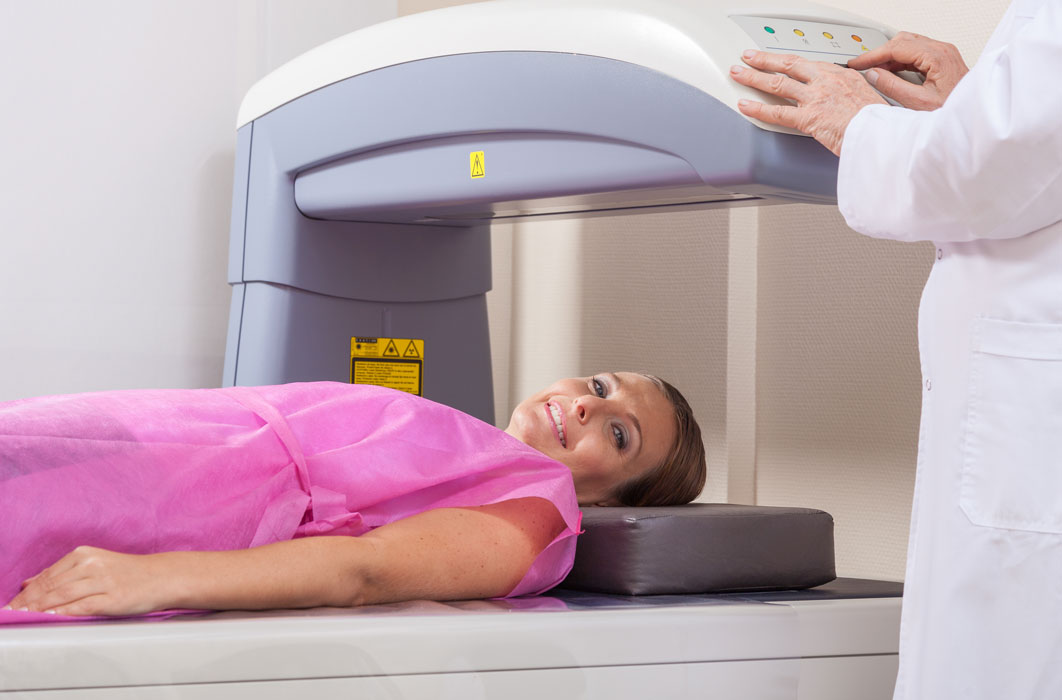BONE DENSITY | DEXA

WHAT IS BONE DENSITOMETRY?
Bone densitometry,or DEXA, is a quick, painless procedure for measuring bone loss. This is a common exam for the lower back and hips, areas affected most often by osteoporosis, and can help determine your risk of fracture. If you have metallic hardware in your back or your hips, your forearm may be measured as well.
Bone mineral is measured with a T score; this number shows the amount of bone you have compared to an adult of the same age and gender. Scores above -1 are normal. A score between -1 and -2.5 are called osteopenia, the first stage of bone loss. A score below -2.5 is defined as osteoporosis.
What is bone densitometry used for?
Bone densitometry is commonly used to diagnose osteoporosis, which primarily affects women after menopause but is also found in men. Osteoporosis involves a gradual loss of calcium, which causes bones to thin and more likely to break. To accurately detect osteoporosis, doctors measure bone mineral density (BMD) with a bone densitometry scan. It can also be used to track how your body responds to treatment for osteoporosis and assess your risk for fractures.
Bone density testing is recommended for:
- Post-menopausal women over 60, who have risk factors for developing osteoporosis
- Patients with a personal or maternal history of hip fracture or smoking
- Post-menopausal women who are tall (over 5 feet 7 inches) or thin (less than 125 pounds)
- Men and women who have hyperparathyroidism
- Men and women who have taken medications known to cause bone loss for an extended period
How do I prepare for a bone density scan?
Bone densitometry is a quick and painless test that does not require much special preparation. However, there are a few things to keep in mind before your exam:
- Refrain from taking calcium supplements for at least 48 hours before your study
- Wear comfortable clothing and avoid garments that have zippers, belts or buttons made of metal /li>
- Let your technologist know if you’ve recently had a barium examination or have been injected with a contrast material for a CT or radioisotope scan
- Let your technologist know if there is a possibility you are pregnant
What should I expect during bone densitometry?
Bone densitometry is a simple, painless, and non-invasive procedure. The study typically takes between 10 and 30 minutes, depending on the type of study and what part of the body needs to be examined. To begin the exam, you’ll lie on a padded table with a detector (an imaging device) above. You’ll be asked to remain as still as possible during the procedure—movement can blur the image, decreasing its quality.
The results of a bone density examination are interpreted by a radiologist and forwarded to your doctor.